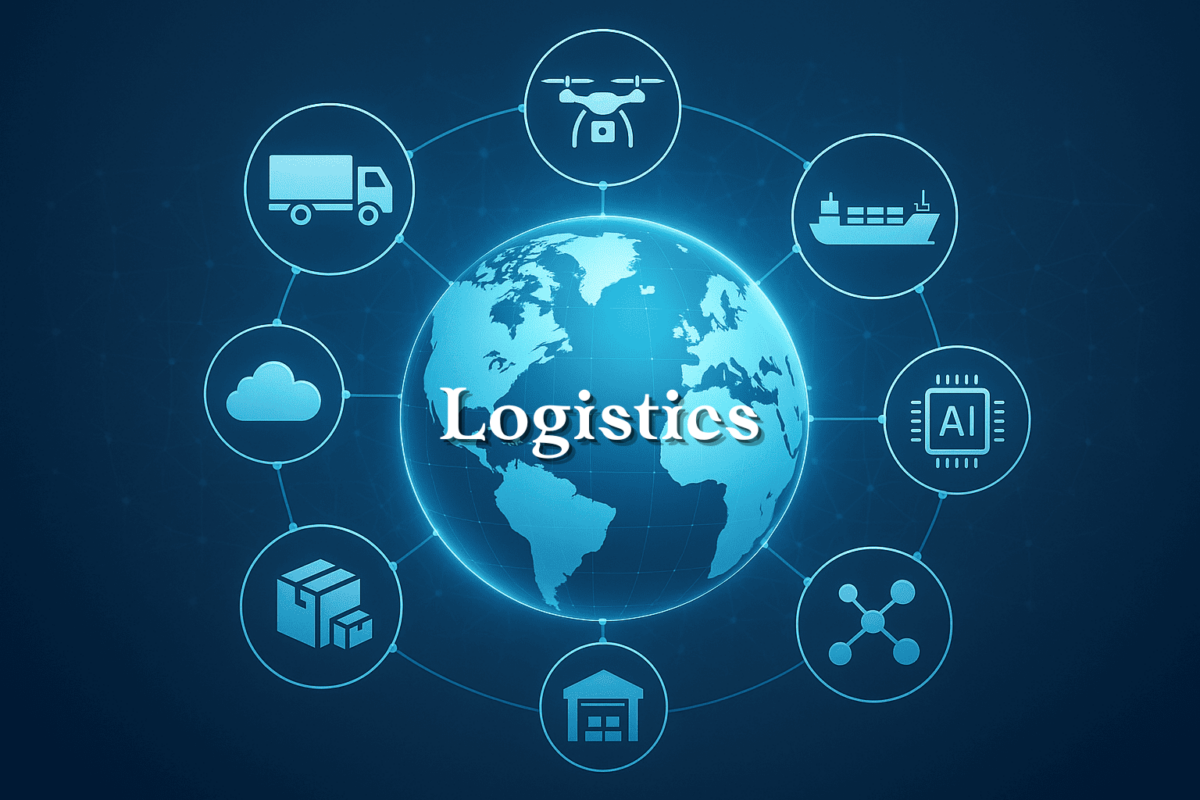How Can Logistics Management Boost Your Business’ Bottom Line?

Hey folks! 👋 If you’ve ever wondered how your shipments, warehouses, or delivery vans could actually make or break your business profits, you’re in for a ride. Let’s talk logistics management—not the dry textbook kind, but the kind that truly powers up your bottom line. Whether you’re running a local store or managing a growing eCommerce empire, having a solid logistics strategy is like having a secret weapon. 🛠️
Let’s unpack how smart logistics decisions save money, delight customers, and prepare you for major growth.
Why Does Logistics Management Matter For Business Profitability?
Think of logistics management as the engine room of your business. You might not always see it, but it keeps everything running smoothly. From the moment a product is manufactured to the second it lands on your customer’s doorstep, logistics management is quietly calling the shots.
Without proper logistics, even the best products can get stuck in warehouses, arrive late, or cost way more to deliver than they should. A smart logistics management system helps you control shipping routes, reduce wait times, cut labor costs, and streamline inventory—all of which boost your profits without cutting corners on customer service.
In a 2023 report by Statista, global logistics spending hit a whopping $10.6 trillion. That’s no accident—it’s because businesses realize how critical logistics is to growth. Whether you’re handling international freight or local deliveries, managing this aspect well can save tens of thousands annually.
Not just that—smart logistics gives your business agility, helping you adapt when demand shifts or supply chains get bumpy.
What Is Logistics Management And How Does It Function Within A Business?
Let me break it down: logistics management is all about getting the right product to the right place at the right time, with the least amount of waste or delay.
Here are its core parts:
- Transportation: Choosing cost-effective routes and reliable carriers.
- Warehousing: Storing goods efficiently to reduce handling time.
- Inventory Management: Making sure you have what you need—no more, no less.
- Order Fulfillment: Processing orders accurately and delivering quickly.
Imagine logistics as the bridge 🛤️ between your business and your customer. If that bridge is weak, slow, or jammed, you’re losing money and reputation.
How Can Logistics Directly Impact Your Cost Structure?
Good logistics is like a well-oiled machine. When everything flows smoothly, you avoid costly detours, reduce fuel consumption, and cut waste. For example, optimized delivery routes can reduce fuel use by 10–30%. Businesses using real-time inventory tracking also report 25–30% less inventory waste.
A great case is Amazon, which uses predictive analytics and a top-tier logistics network to save billions annually. By modeling their approach on a logistics-first mindset, even small businesses can trim overhead without sacrificing service.
What Are The Cost-Saving Benefits Of A Strong Logistics System?
Let’s talk savings 💸—because strong logistics doesn’t just feel good, it shows up in your budget sheet.
Efficient logistics management reduces:
- Labor costs by automating repetitive tasks.
- Storage costs by improving stock turnover.
- Transportation costs through smarter routing and vehicle management.
In fact, studies show that businesses using the best logistics management software can reduce operational costs by up to 15%. That’s not chump change!
When your logistics plan includes accurate demand forecasting and flexible delivery options, you prevent stockouts and overstocking—two silent profit-killers. The result? A leaner, more agile operation that spends less and earns more.
How does optimized transportation reduce operational expenses?
Transport is one of the biggest cost chunks in logistics, often taking up 30–60% of the total logistics budget. Optimized transportation means using shorter, faster routes, avoiding traffic delays, and grouping deliveries smartly.
With logistics software, businesses can track vehicle health, driver behavior, and delivery performance. Fuel-efficient driving strategies alone can cut fuel costs by 10–15%. Over a year, that adds up—especially for delivery-heavy operations.
Can better warehouse management lower storage costs?
Absolutely. By using vertical space, organizing SKUs efficiently, and rotating inventory regularly, companies reduce the need for excessive storage.
Real-time stock updates also help avoid over-purchasing. Some companies using modern logistics systems report 20% savings in warehouse operating costs thanks to smarter layouts and inventory tracking.
How does a logistics management system streamline workflows?
A modern logistics management system automates manual tasks like dispatching, scheduling, and invoicing. This reduces human error and shortens delivery cycles.
Not only does this free up your staff’s time, but it also leads to faster deliveries and fewer mistakes. A streamlined system improves your ROI by saving time and reducing expensive hiccups 🤖.
In What Ways Can Logistics Management Enhance Delivery Performance?
Let’s face it: today’s customers expect deliveries to be fast, trackable, and on time—every time. Efficient logistics doesn’t just meet those expectations—it can exceed them.
Companies with strong logistics processes experience:
- 30–50% faster delivery turnaround.
- Up to 25% fewer delivery errors.
- Improved customer satisfaction and return purchase rates.
Faster and more reliable deliveries help you stand out in a crowded marketplace, especially when customers expect same-day or next-day shipping. Satisfy them, and they’ll keep coming back.
Why is delivery speed crucial to customer retention?
Here’s a stat to chew on: 88% of consumers say delivery speed is a key factor in their decision to shop with a retailer again (according to a 2022 PwC report).
When deliveries are slow, customers feel ignored. When they’re fast, customers feel valued. It’s that simple. Rapid fulfillment builds trust and encourages loyalty.
How do accuracy and reliability affect brand reputation?
Every wrong or late delivery chips away at your brand’s trustworthiness. Even one error can make a customer think twice before ordering again.
Businesses that maintain a 95%+ delivery accuracy rate are far more likely to retain customers long-term. In contrast, frequent delivery issues often lead to negative reviews and churn.
How can real-time tracking improve customer experience and internal processes?
Real-time tracking gives your customers transparency. They know where their package is, which builds trust. Internally, it helps teams spot delays early, adjust schedules, and prevent customer disputes before they happen.
GPS and logistics software provide that transparency, which can reduce customer complaints by as much as 30%.
How Does Logistics Management Support Scalability And Growth?
Imagine your business suddenly doubles in size. Can your current logistics setup handle it? If the answer is no, you need a scalable logistics strategy.
Efficient logistics supports:
- Higher order volumes.
- Entry into new markets.
- Faster fulfillment, even during high-demand seasons.
A business that nails logistics can grow without bottlenecks. For example, Shopify-powered stores that integrated logistics tools handled Black Friday surges with 20% faster fulfillment and 15% fewer errors.
Can logistics flexibility support seasonal or unexpected demand surges?
Yes! Flexibility means being ready with temporary storage, backup suppliers, and multiple shipping options. Demand forecasting tools—often built into logistics software—help businesses prep for busy seasons.
A great example is Target’s 2023 holiday strategy, which involved on-demand warehousing and regional delivery centers to handle spikes without delays.
How do global logistics strategies unlock new market potential?
Expanding internationally isn’t just about marketing—it’s about managing cross-border logistics, from customs paperwork to delivery guarantees.
Companies that master international logistics gain access to massive new customer bases. Strong planning around international compliance and shipping timelines ensures smooth entries into these markets.
What role does automation play in scaling operations efficiently?
Automation speeds up everything—from sorting and labeling to restocking and packaging. It’s a game-changer during high-volume periods.
Businesses using automated systems report a 30% boost in processing speed and 20–40% savings in labor costs. That kind of efficiency is vital for growth.
Final Thoughts
So, folks, here’s the bottom line: mastering your logistics strategy is one of the smartest, most impactful things you can do for your business. From reducing costs to keeping your customers smiling, logistics plays a massive role in how smoothly (and profitably) your business runs.
If you haven’t audited your logistics setup lately, now’s the time. Whether you adopt a logistics management system or fine-tune your current one, every improvement brings you closer to better margins and a happier customer base. 🚚💡
Key Takeaways
- Logistics management cuts costs across operations
- Faster, more accurate deliveries increase customer satisfaction
- A scalable logistics system supports long-term growth
- Investing in logistics software improves ROI and efficiency
- Smart logistics decisions directly impact profitability
Frequently Asked Questions (FAQs)
1. How does logistics reduce overall business expenses?
Logistics reduces business expenses by optimizing routes, improving inventory turnover, and minimizing storage and transportation costs. Companies with strong logistics systems report up to 15% savings on operational costs due to improved planning, automation, and resource management.
2. Is logistics management software necessary for small businesses?
Yes, even small businesses benefit from logistics management software. It helps automate key tasks like order tracking, inventory control, and delivery scheduling. This saves time, reduces errors, and allows small businesses to offer a level of service that rivals larger competitors.
3. What’s the ROI of improving logistics systems?
Improving logistics systems often results in a strong ROI through cost reductions, increased efficiency, and better customer retention. On average, companies investing in logistics technology see a 15–20% return within the first year through savings and operational gains.
4. Can logistics really influence customer loyalty?
Absolutely. Fast, accurate, and transparent deliveries significantly increase customer satisfaction, which boosts loyalty. A poor delivery experience, on the other hand, can turn customers away. Loyalty often hinges on consistent, reliable logistics performance.
5. How do I assess if my logistics system needs upgrading?
Signs that your logistics system needs an upgrade include frequent delivery delays, inventory mismatches, high shipping costs, and low customer satisfaction. Conducting a logistics audit or comparing your performance to industry benchmarks can help identify gaps and areas for improvement.
Check out how to master Blade templating in Laravel here:









